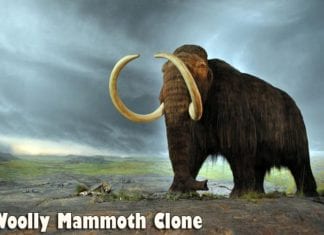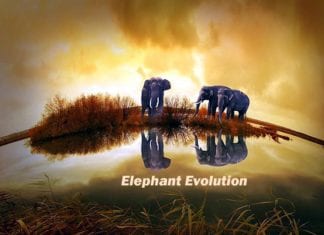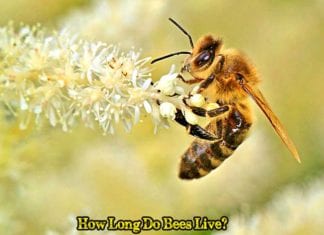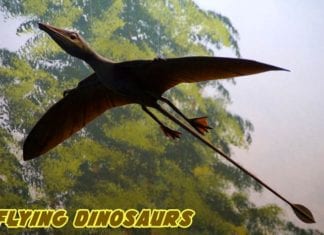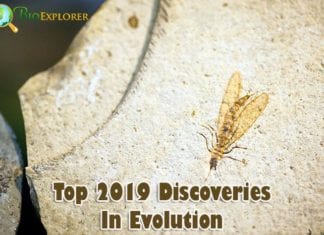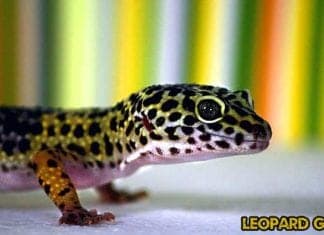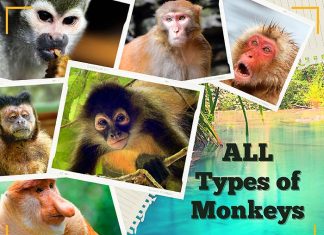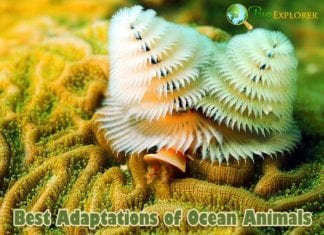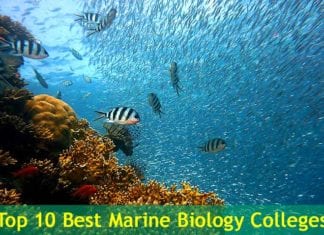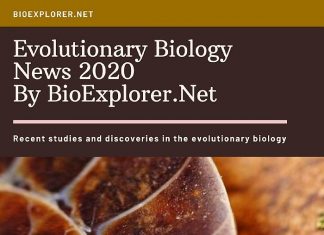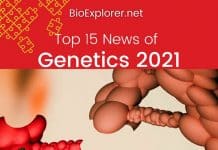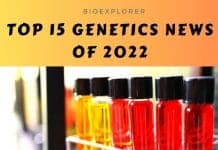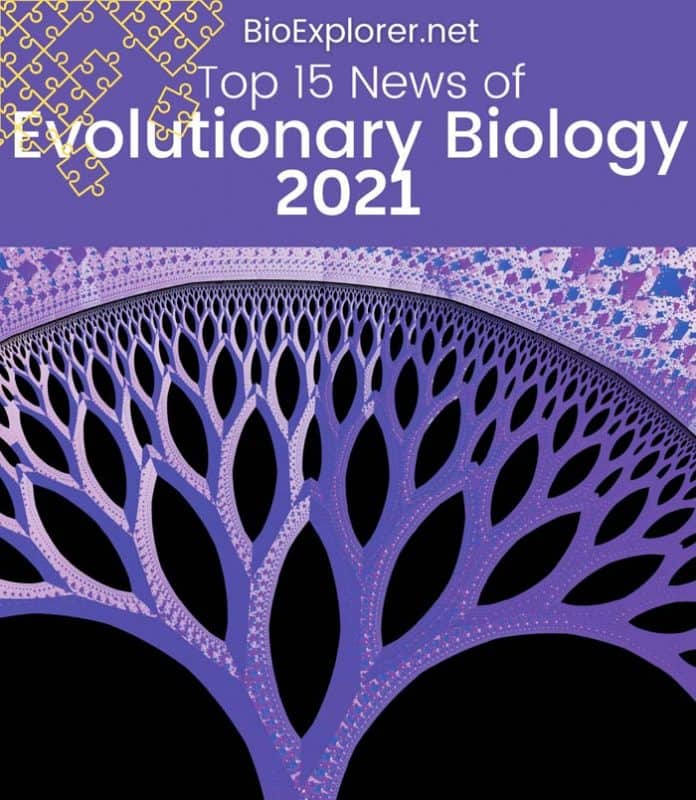
The following discoveries highlighted the inventions in Evolutionary Biology in 2021. It emphasizes various evolutionary biology research and developments such as the role of limestone producers in shaping ancient climates, how crocodiles survived the meteor impact that wiped off dinosaurs, the evolution of novel genes that contribute to longevity, the concept of evotype, the role of the cerebellum in human brain development and more.
Table of Contents
- Top 10 Evolutionary Biology News of 2021
- 1. Researchers demonstrate how changes in Earth’s orbit have impacted the evolution of coccolithophores (France, Dec 2021)
- 2. Researchers explain why crocodiles haven’t evolved much since the dinosaur era (UK, Jan 2021)
- 3. Study shows that 2,000 novel genes important for human longevity are revealed by the evolution of mammals (Spain, Sept 2021)
- 4. Researchers learn new things about the evolution of the date palm using a 2,200-year-old leaf discovered in an ancient temple in Egypt (USA, Sept 2021)
- 5. Researchers look at the molecular causes of the evolution of a fly’s eye (Germany, Jan 2021)
- 6. Researchers create the “evotype” to unleash the potential of evolution for improved engineering biology (UK, June 2021)
- 7. Researchers discovered the oldest bat fossil in Asia (USA, July 2021)
- 8. Early life is characterized by a new species of cyanobacteria (USA, May 2021)
- 9. Scientists reveal that theropod dinosaur jaws strengthened as they evolved (UK, Dec 2021)
- 10. Researchers studying evolution have found a mechanism that allows lizards to breathe underwater (Canada, May 2021)
- 11. Cerebellum was crucial in developing the human brain (USA, May 2021)
- 12. The role of diet in the expansion of contemporary shark populations (Sweden, Oct 2021)
- 13. Changes in gene expression help fish adapt to ocean acidification (Hong Kong, May 2021)
- 14. For aquatic life, ancient amphibians developed stiffer intervertebral joints (USA, June 2021)
- 15. The evolution of photosynthetic algae has finally been explained (Australia, March 2021)
Top 10 Evolutionary Biology News of 2021
Let’s glimpse the research findings of 2021 in this field with broader perspectives.
1. Researchers demonstrate how changes in Earth’s orbit have impacted the evolution of coccolithophores (France, Dec 2021)
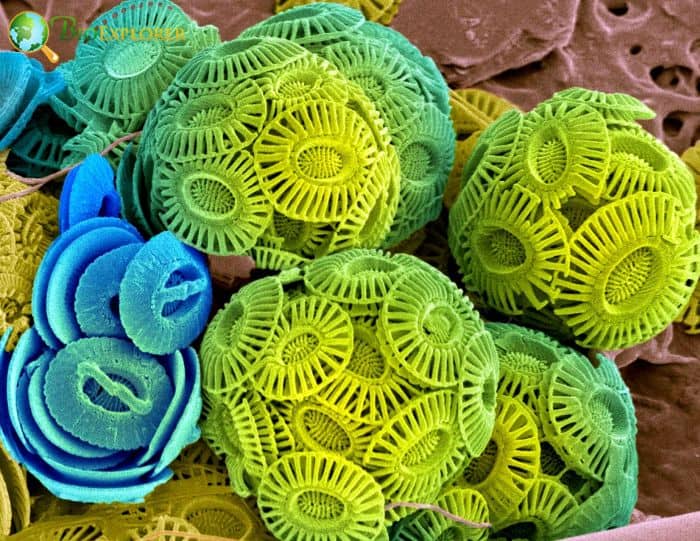
Coccolithophores are microscopic algae surrounding their single cells in tiny limestone plates known as coccoliths. They have a significant role in the carbon cycle and in controlling the chemistry of the seas since they produce half of the limestone formed in the oceans. Researchers demonstrate that certain changes in Earth’s orbit have impacted the evolution of coccolithophores.
- The scientists discovered that coccoliths experienced greater and lesser size and shape diversity cycles, with rhythms of between 100 and 400 thousand years.
- They also suggest a possible explanation: variations in the roughly circular shape of Earth’s orbit around the Sun, which follows the same rhythms. Thus, the equatorial regions exhibit less seasonal change when Earth’s orbit is more round, as it is now (known as low eccentricity), and species that are not highly specialized predominately in all the oceans.
- Conversely, coccolithophores diversify into numerous specialized species. Still, they create less limestone as eccentricity rises and seasons become more prominent close to the equator.
- Importantly, because of their prevalence and widespread distribution, these organisms contribute significantly to the carbon cycle and the regulation of ocean chemistry since they produce half of the limestone (calcium carbonate, partly made of carbon) formed in the seas.
Therefore, it is likely that the cyclical abundance patterns of these limestone producers were important in shaping ancient climates. They may also help explain previously puzzling climate fluctuations during warm times. In other words, without ice, the pace of climate change could have been determined by the biological evolution of microalgae.
Suggested Reading:
Biological Weathering 101
![]()
2. Researchers explain why crocodiles haven’t evolved much since the dinosaur era (UK, Jan 2021)
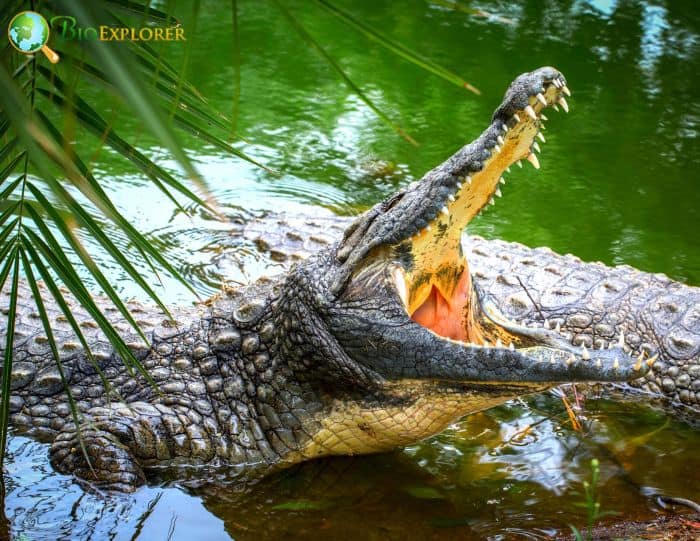
According to new research by experts at the University of Bristol, a “stop-start” pattern of evolution, controlled by environmental change, may explain why crocodiles have evolved so little since the time of the dinosaurs.
- The authors of this new study describe how crocodile evolution follows a “punctuated equilibrium” pattern. Although they normally evolve slowly, on rare occasions, they evolve more swiftly due to a shift in their environment.
- In particular, this research reveals that their evolution quickens and their body size grows as the environment warms. The lead author from the School of Geographical Sciences at the University of Bristol described how they utilized a machine learning algorithm to compare measurements from fossils and account for their age to predict rates of evolution.
- The results demonstrate that crocodiles’ small genetic variety and apparent lack of evolution are a product of their slow evolutionary pace. In addition, it appears that the crocodiles developed an extremely effective and adaptable body structure that they didn’t need to alter to survive.
Thus, it may be derived that crocodiles may have survived the meteor impact that wiped off dinosaurs at the end of the Cretaceous period because of their adaptability. Crocodiles typically do better in warm environments because they cannot regulate their body temperature and depend on the environment for warmth. The crocodiles discovered a way of existence adaptable enough to cope with the profound environmental changes since the dinosaur era.
Suggested Reading:
Woolly Mammoth Clone Project: Can It Be Resurrected?
![]()
3. Study shows that 2,000 novel genes important for human longevity are revealed by the evolution of mammals (Spain, Sept 2021)

An evolutionary comparative genomic study involving 57 species of mammals conducted by an international research team led by scientists at the Institute of Evolutionary Biology (IBE), a center of the Spanish National Research Council (CSIC), and Pompeu Fabra University in Barcelona, Spain, has discovered more than 2,000 new genes associated with human longevity.
- The destabilization of the proteome, or all of the proteins expressed by the genome, is one of the impacts seen in all mammals after a certain age for unknown causes.
- Protein instability develops with time and contributes to general physiological deterioration. Nevertheless, the ages at which the proteins destabilize vary greatly between species.
- As a result of this investigation, the research team found that proteins from longer-living organisms are substantially more stable than those from shorter-living organisms when they contain amino acid modifications.
- The comparative genomic study analyses genetic and behavioral data from 57 species of mammals and finds that the most long-lived species share a higher level of protein stability.
- The genes discovered code for more durable proteins in species with longer lifespans and are engaged in biological processes that contribute to the extension of mammalian life spans, such as DNA repair, coagulation, and inflammatory response.
- Overall, the detected mutations largely mirror the variation in longevity across current human populations.
This study paves the way for creating new therapeutic targets for treating age-related disorders in people. In addition, the outcomes of this research show the promise of the evolutionary perspective in medicine.
Suggested Reading:
Elephant Evolution
![]()
4. Researchers learn new things about the evolution of the date palm using a 2,200-year-old leaf discovered in an ancient temple in Egypt (USA, Sept 2021)

Scientists have successfully identified the ancient hybrid origin of some date palms using a leaf recovered from the archaeological site of an ancient Egyptian temple.
- In this case, scientists working with the Royal Botanic gardens in the UK sequenced the nuclear and plastid genomes of a date palm leaf that was discovered in a temple at a UNESCO World Heritage site south of Cairo, Egypt. Radiocarbon dating confirmed it to be from the Late Period of ancient Egypt, roughly 357-118 BCE, which is approximately 2,200 years old.
- Then, using plastid and nuclear genome-wide data sets, researchers used population genomic tests, molecular clock models, and gene-flow-aware multi-species coalescence (MSC) approaches to detect ancient gene flow provide a temporal framework for plant diversification and reticulated evolution.
The study provides information on the significance of hybridization in developing date palms, particularly those from North Africa. Since date palms continue to be an important part of Middle Eastern and North African agriculture, this information may be helpful for modern date palm breeding.
Suggested Reading:
Top 18 Amazon Rainforest Plants
![]()
5. Researchers look at the molecular causes of the evolution of a fly’s eye (Germany, Jan 2021)
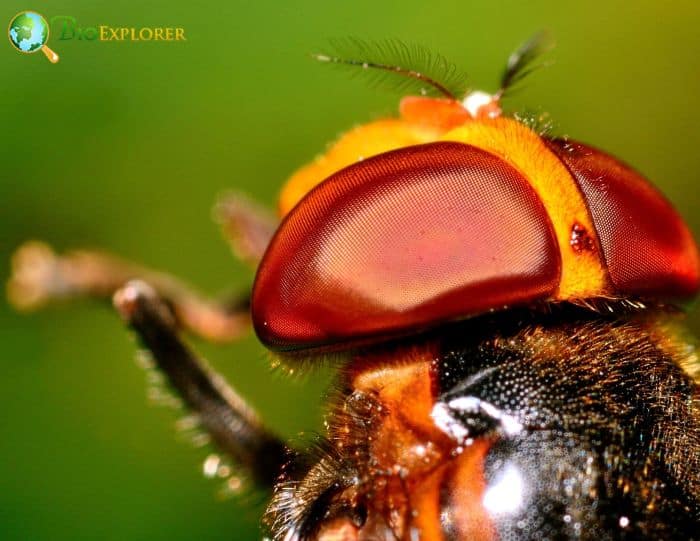
Hundreds of separate eyes, or “facets, ” make up the remarkable compound eyes of insects. The huge range of sizes and shapes developed during evolution frequently adapt to various environmental situations. Scientists have recently demonstrated that these variations can result from various fruit fly genome modifications.
- Comparative research has demonstrated that relatively similar mechanisms and genes govern the development of insect eyes. Therefore, the researchers utilized several Drosophila species as a model.
- Up to 250 more facets can be found in a native to Mauritius Drosophila species than in a closely related species. Although the fundamental developmental processes in the two species under study are relatively similar, some genomic variations may account for the observed variations in eye size.
- The production of noticeably larger eyes is caused by mutations in a crucial central node of the gene network in the species native to Mauritius, according to a thorough investigation of eye development in both species.
This research advances our knowledge of how complicated organs have evolved. In addition, some of the techniques developed in this study could be used to study the breeding of animals and plants, specifically to seek alterations in the genome that affect complex features like milk output or fruit size.
Suggested Reading:
How Long Do Bees Live?
![]()
6. Researchers create the “evotype” to unleash the potential of evolution for improved engineering biology (UK, June 2021)
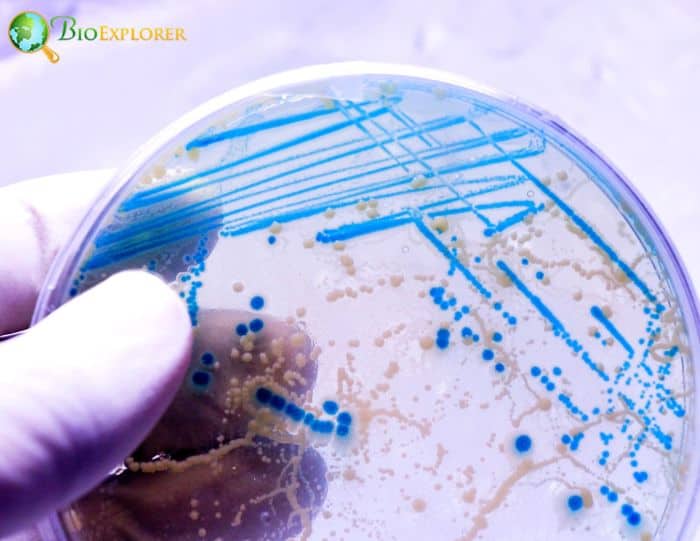
Scientists have developed a novel strategy to assist biological engineers in harnessing and creating the evolutionary potential of new biosystems. The foundation for the following generation of reliable, secure, and self-improving biotechnologies is laid by their notion of the “evotype“.
- The Research Team created the idea of the evotype to represent a biosystem’s capacity for evolution. Importantly, the evotype may be divided into three essential components: variety, function, and selection.
- Each provides bioengineers with a tuning knob to regulate the potential evolutionary pathways.
- The work offers a much-needed framework to define a biosystem’s evolutionary potential and reconceive biological engineering so that it cooperates with life’s capacity for evolution.
The idea of the evotype opens up interesting new ways to think about and apply evolution in entirely new situations and a mechanism for creating biotechnologies that can harness evolution in novel ways. This might inspire us to create new, evolving technology that can self-adapt.
![]()
7. Researchers discovered the oldest bat fossil in Asia (USA, July 2021)

Field excavation in the Junggar Basin led to the discovery of two fossilized teeth from two different Altaynycteris aurorabat species. It is believed to be the earliest bat fossil ever discovered in Asia.
- Bats suddenly appeared in the fossil record around 55 million years ago and are already dispersed around the globe; researchers stated that the earliest bats are known from Australia and a few locations in Europe, including southern France and Portugal.
- Therefore, they were already present worldwide when they first appeared in the fossil record as these fragmentary fossils. Then, around 55 million years ago, bats suddenly appeared in the fossil record and spread worldwide”.
- This declaration was made by the study’s lead author, Matthew Jones, a doctoral candidate in the University of Kansas’ ecology and evolutionary biology departments. “Australia and a few European areas, such as southern France and Portugal, are where the earliest bats have been discovered.
- As a result, they were already widespread when they first appeared in the fossil record as these fragmentary fossils. The scientists were able to date the specimens to the beginning of the Eocene, the earliest period when bat fossils have been found anywhere on Earth, using a careful morphological study of the teeth and biostratigraphy or assessing the position of layers of fossil remains in the deposits.
- The discovery of these ancient bat fossils in Asia supports the idea that bats may have originated in Asia and later spread worldwide after developing flight.
According to the researchers, the new fossils fill in a knowledge gap regarding the evolution of bats, a mystery to experts. They may teach us more about mammals in general.
Suggested Reading:
Flying Dinosaurs – Fake or Fact?
![]()
8. Early life is characterized by a new species of cyanobacteria (USA, May 2021)
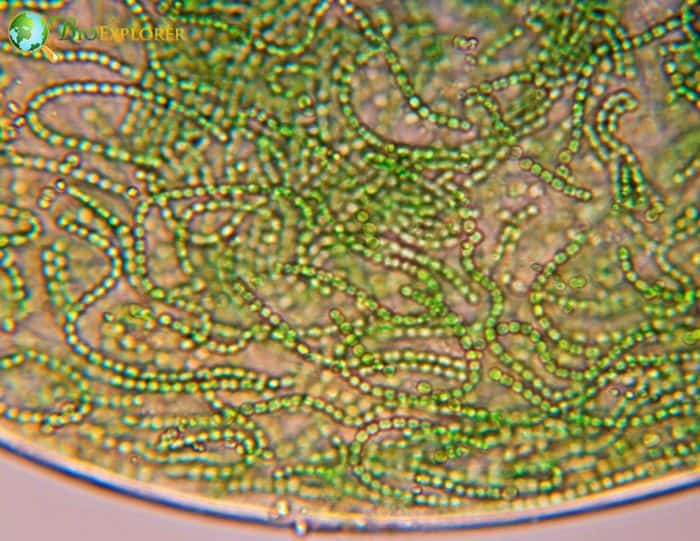
About 2.4 billion years ago, cyanobacteria first developed the ability to undertake photosynthesis, pouring tonnes of oxygen into the atmosphere during the so-called Great Oxygenation Event, which created multicellular life forms. Anthocerotibacter panamensis, a novel species of cyanobacteria, may shed light on how photosynthesis developed to give rise to the modern world.
- Lab was working on research to isolate cyanobacteria from hornwort plants and spotted something unusual in a sample from a rainforest in Panama. The cyanobacterium’s DNA was sequenced by the researchers, who discovered that it belonged to the highly uncommon Gloeobacteria group.
- About 2 billion years ago, Gloeobacteria split off from the more well-known Phycobacteria. As a result, the two groups differ greatly, while A. panamensisexhibits certain characteristics in common with both.
- The new species, like other Gloeobacteria, lacks thylakoids, which are membrane-bound spaces where Phycobacteria and plants’ photosynthetic reactions occur.
- However, unlike the other Gloeobacteria, A. panamensis produces carotenoids, a class of substances that aid in shielding an organism from sun harm, in a manner that is comparable to that of Phycobacteria and plants.
These studies revealed that a new thylakoid-less cyanobacterium cultured from a tropical hornwort, Anthocerotibacter, opens a new window to illuminate the dawn of oxygenic photosynthesis further.
Suggested Reading:
Order Gunnerales / Rhubarb & Resurrection Flowers
![]()
9. Scientists reveal that theropod dinosaur jaws strengthened as they evolved (UK, Dec 2021)
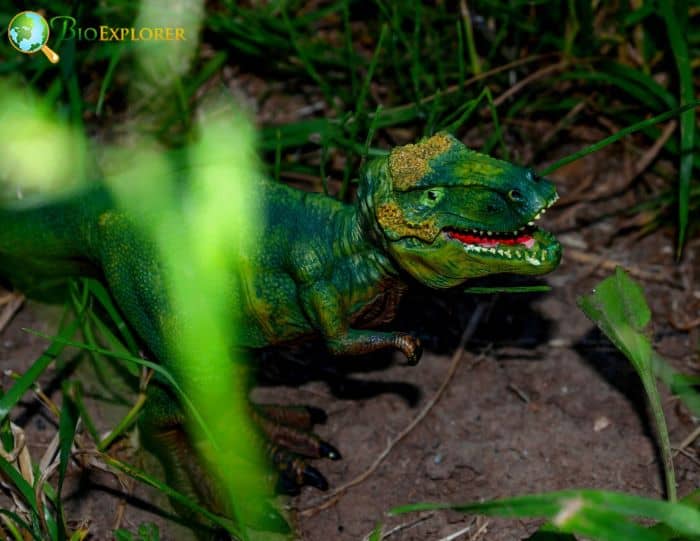
According to a new study, theropod dinosaurs developed stronger jaws over time, enabling them to eat harder food.
- More than 40 lower jaws from five different theropod dinosaur groups, including well-known carnivores like Tyrannosaurus and Velociraptor and less well-known herbivores like ornithomimosaurs, therizinosaurs, and oviraptorosaurs, were digitally modeled by the international team, which researchers at the University of Birmingham led.
- Although theropod dinosaurs are sometimes portrayed as vicious predators in popular culture, their meals vary greatly. In addition, it’s fascinating to see how both predators and herbivores’ jaws have grown structurally stronger through time.
- They may now take advantage of a greater variety of foods. Theropod dinosaurs suffered major nutritional changes during their 165-million-year evolutionary history.
- They initially developed into carnivores before becoming specialized carnivores, omnivores, and herbivores. Theropods that consume plants frequently stress their jaws; therefore, having a stronger jaw is crucial.
- Herbivores with very downward-bending jaws, like Erlikosaurus and Caudipteryx, may relieve such tension.
According to this study, the evolution of the entire group of dinosaurs was ultimately influenced by the developmental patterns of young dinosaurs. This probably helped theropod dinosaurs succeed over more than 150 million years by facilitating the evolution of their jaws. Understanding the nutritional changes in other vertebrate species also requires research into how their eating mechanisms are altered.
Suggested Reading:
Top 2019 Discoveries in Evolution
![]()
10. Researchers studying evolution have found a mechanism that allows lizards to breathe underwater (Canada, May 2021)
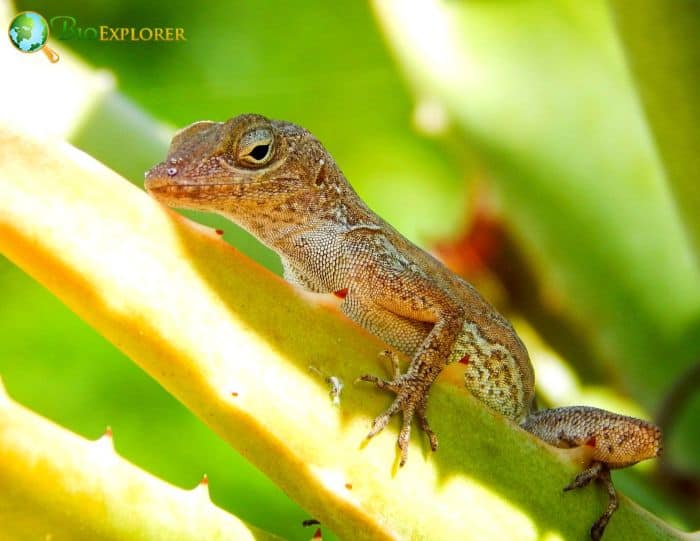
The ability of Anolis lizards, often known as anoles, to breathe underwater with the help of a bubble attached to their snouts has been demonstrated by a group of evolutionary biologists. Some anoles specialize in streams, and these semi-aquatic species frequently dive underwater to fend off predators. They can stay underwater for up to 18 minutes. The procedure was given the name “rebreathing” by the researchers in honor of scuba diving equipment.
- Air is exhaled by semi-aquatic anoles into a bubble that adheres to their skin. The researchers examined the air’s oxygen (O2) concentration in the bubbles. They discovered that it reduced over time, proving that rebreathed air is used in respiration.
- The capacity to stay submerged longer boosts the lizard’s chances of avoiding predators, so rebreathing probably evolved. Despite most of the species being distantly related, the researchers examined six species of semi-aquatic anoles. They discovered that each one exhibited a rebreathing ability.
- Rebreathing has been extensively investigated in aquatic arthropods like water beetles. Still, it was not anticipated in lizards due to physiological distinctions between arthropods and vertebrates.
- When an animal is immersed, in addition to the oxygen in its lungs, the air bubble on its nose likely functions like a scuba tank. Water beetles and other aquatic arthropods do this to increase the time they stay submerged.
This research deepens our understanding of how creatures overcome obstacles in their habitats in novel and inventive ways. Of course, that is valuable in and of itself. Still, findings like this can also be helpful to people as we look for answers to our difficult problems.
Suggested Reading:
All You Need To Know About Leopard Geckos
![]()
11. Cerebellum was crucial in developing the human brain (USA, May 2021)
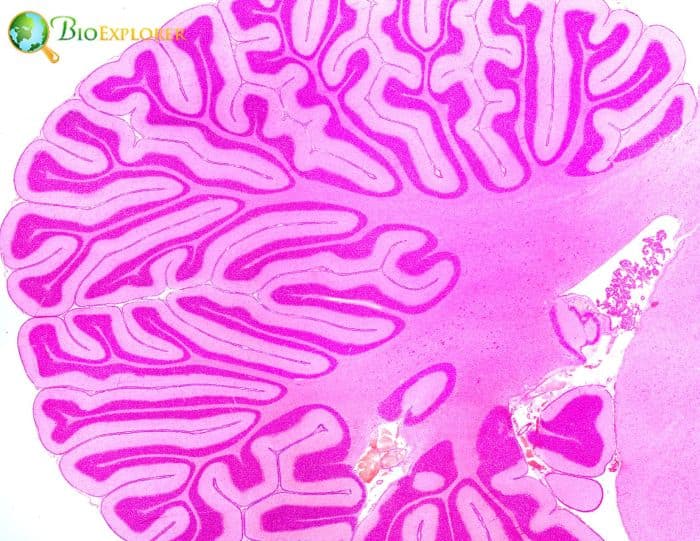
A recent study suggests that the cerebellum underwent evolutionary changes that may have influenced the development of human culture, language, and tool use. The cerebellum is a region of the brain that was formerly mostly recognized for coordinating movement.
- The prefrontal cortex, a brain region crucial for executive functions like moral judgment and decision-making, has received much attention from researchers looking into how humans evolved their exceptional capacity for thought and learning.
- However, research on the cerebellum’s function in human cognition has recently gained increasing traction. Guevara and her team compared the molecular composition of humans, chimpanzees, and Rhesus macaque monkeys to study the evolution of the cerebellum and the prefrontal cortex.
- To uncover epigenetic variations, they looked at the genomes of the three species’ two types of brain tissue. These changes do not alter the DNA sequence but may impact which genes are active and passed down to succeeding generations.
- Humans differed more epigenetically from chimpanzees and rhesus macaques in the cerebellum than in the prefrontal cortex, demonstrating the cerebellum’s significance in developing the human brain.
The results of the current study are important for comprehending how the human brain works and its capacity for adaptation and link formation. These epigenetic variations might have a role in aging and illness. The new study supports the notion that the cerebellum should be considered when examining the history of the human brain.
Suggested Reading:
334 Types of Monkeys
![]()
12. The role of diet in the expansion of contemporary shark populations (Sweden, Oct 2021)
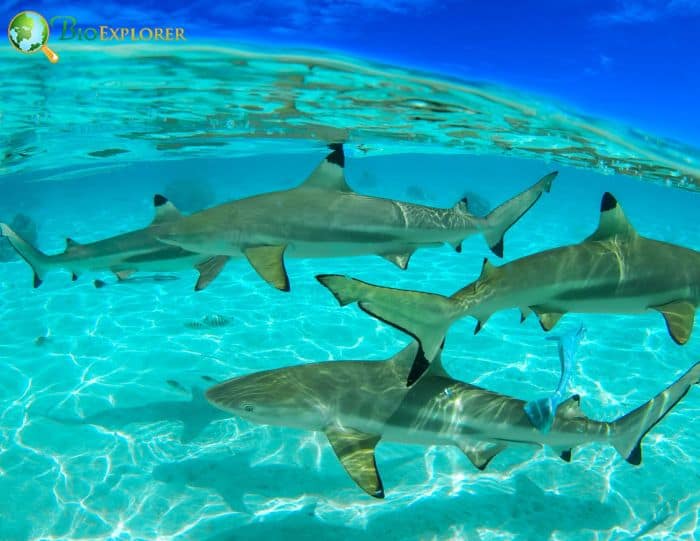
Shark evolution was significantly influenced by the availability of prey and the capacity to adapt to shifting environmental conditions. A recent study that examined over 3,000 shark teeth sheds new light on the formation of contemporary shark communities.
- The latest study examined the variety of shark teeth from the Mesozoic’s final stages (about 80 million years ago). It specifically sought to comprehend why there are more than 290 species of ground sharks. Still, only 15 species of mackerel sharks (scientific name: Lamniformes) exist today (Carcharhiniformes).
- Our study represents the first attempt to investigate how diet has affected lamniform and carcharhiniform sharks over the last 83 million years. Tooth morphology is a more direct proxy for shark living habits.
- We created a foundation for interpreting changes in diet in the fossil record by measuring the correlation between tooth shapes and diets in living sharks. Lamniform sharks experienced historically low tooth disparity during this time.
- Because Megalodon was probably an expert at consuming the large whales of the era, this low disparity suggests that top predatory sharks may be more vulnerable to extinction if they have specialized diets.
According to research, Lamniformes are alive today due to numerous extinction events, possibly brought on by a propensity for specialization. However, environmental changes and dietary specialization were probably the main causes of the imbalance between Lamniformes and Carcharhiniformes.
Suggested Reading:
What Do Killer Whales Eat?
![]()
13. Changes in gene expression help fish adapt to ocean acidification (Hong Kong, May 2021)
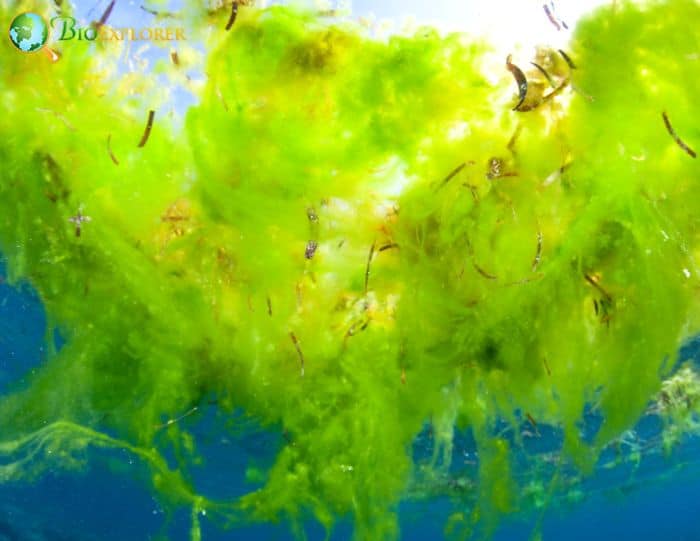
Marine organisms must modify their physiology to survive in a low-pH environment. They do this at the molecular level by changing their genes’ expression. The investigation of these variations in gene expression may help to shed light on how life will adapt to the predicted future effects of ocean acidification.
- There are a few locations on Earth where volcanic activity is causing CO2 to bubble up from the seafloor, simulating the conditions expected to develop across the oceans in the not-too-distant future.
- We can then better understand what will happen to marine organisms in the future in the event of ocean acidification under lab conditions.
- They gathered samples from CO2 seeps and the surrounding area. In addition, they examined molecular data from a species of fish (the Common triplefin) that had successfully adapted to acidified environments at CO2 volcanic vents based on ecological evidence.
The results of this study suggest that genetic variation at present is one of the factors most important for determining how well marine species can adapt to changes in their environmental conditions in the future. Therefore, the most crucial step is to evaluate the genetic diversity of various marine species.
Suggested Reading:
Explore 15 Remarkable Adaptations of Ocean Inhabitants
![]()
14. For aquatic life, ancient amphibians developed stiffer intervertebral joints (USA, June 2021)
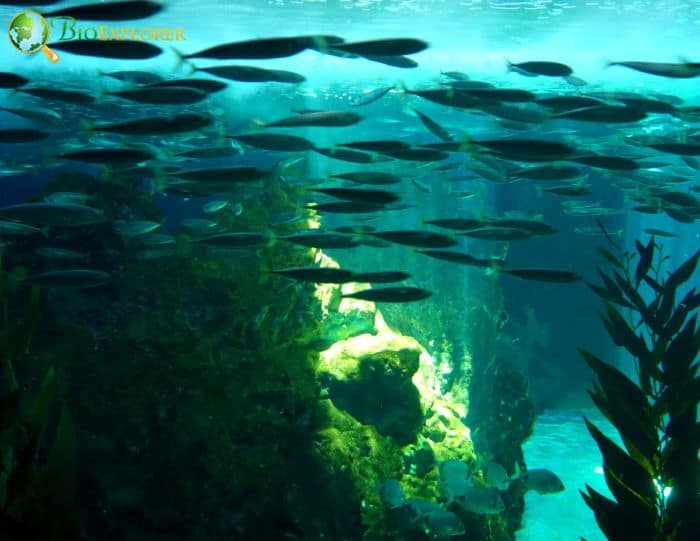
Contrary to earlier theories, a new study shows that stiffer spinal columns were evolved by a group of ancient amphibians known as temnospondyls to adapt to aquatic life.
- Temnospondyls are a genus of extinct amphibians that live in terrestrial, aquatic, and semi-aquatic habitats. They were among the earliest land-dwelling vertebrates.
- They thus offer important insights into how early vertebrates adapted from aquatic to terrestrial environments. In addition, new information on the adaptations temnospondyl backbones made to their environment and modes of locomotion is presented in this study.
- According to the researchers, the shape of the lower vertebra (known as the intercentrum), which affects the spinal column’s flexibility, varies most about a species’ habitat.
- More aquatic species had more rigid backbones. Comparing species across this group’s evolutionary history suggests that the earliest temnospondyls were terrestrial, and their descendants repeatedly transitioned to life in the water, changing the shape of their vertebrae.
These results also show that the intercentrum correlates with the environment more so than the upper part of the vertebrae (a region called the neural arch). Unfortunately, there has never been any investigation into the differences between the two parts, and no existing interpretations exist. More research will improve our comprehension of how animals, including our earliest land-dwelling ancestors, adapt when they switch from swimming to walking lifestyles.
Suggested Reading:
Top 10 Best Marine Biology Colleges
![]()
15. The evolution of photosynthetic algae has finally been explained (Australia, March 2021)

Red algae and cryptophytes, two extinct algae species, were missing an evolutionary link until scientists discovered the protein.
- A single-celled, photosynthetic organism, a type of algae that evolved over a billion years ago, is a crucial protein in a cryptophyte. Molecular biologists have been baffled about how cryptophytes acquired the proteins needed to capture and direct sunlight for cellular use.
- They already knew that the protein was a component of the organism’s solar energy conversion antenna or antenna. They also knew that the cryptophyte had inherited some antenna parts from its photosynthetic forebears, red algae, and cyanobacteria, one of the earliest life forms on Earth and the source of stromatolites.
- The many different antenna systems used by photosynthetic algae can capture every photon of light that is present and transfer it to a photosystem protein, which transforms the light energy into chemical energy when another organism ingests a red alga to create the first cryptophyte.
- This time, however, the antenna was moved to the opposite side of the host organism’s membrane and completely reshaped into new protein shapes that were just as effective at capturing sunlight photons.
Scientists hope to learn the underlying physical principles that underlie the exquisite photon efficiency of these photosynthetic systems by studying the algal systems. Then, according to researchers, these could one day be used in optical devices, such as solar energy systems.
Suggested Reading:
Top 10 Evolutionary Biology News of 2020
![]()
This series of evolutionary biology news gives us a detailed overview of the recent development in this field. Commencing evolution of coccolithophores, adaptability of crocodiles, creation of new therapeutic targets for the treatment of age-related disorders in people, epigenetic evolution of the cerebellum, intercentrum correlates with the environment more so than the upper part of the vertebrae (a region called the neural arch). These physical principles underlie the exquisite photon efficiency of these photosynthetic systems by studying the algal systems. Now explore the top 15 Evolutionary Biology News of 2022 here.
![]()



